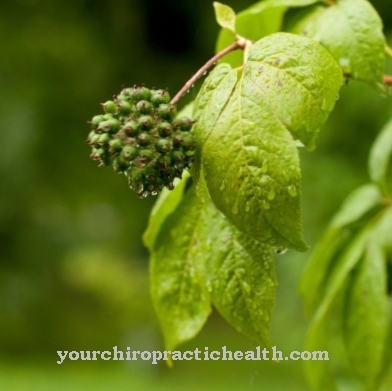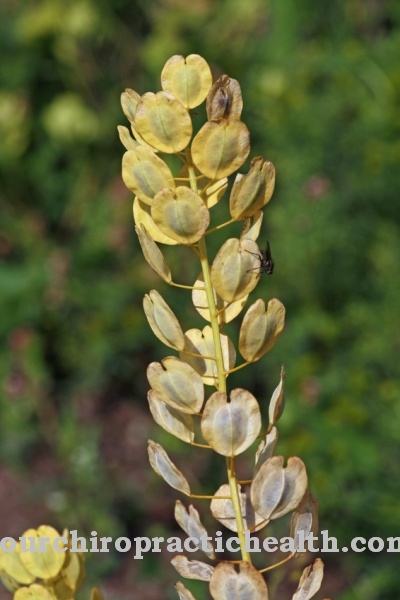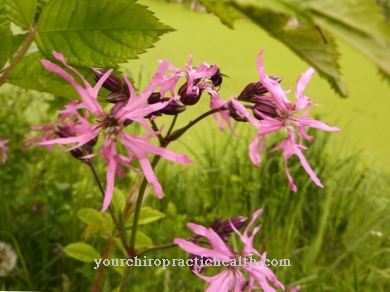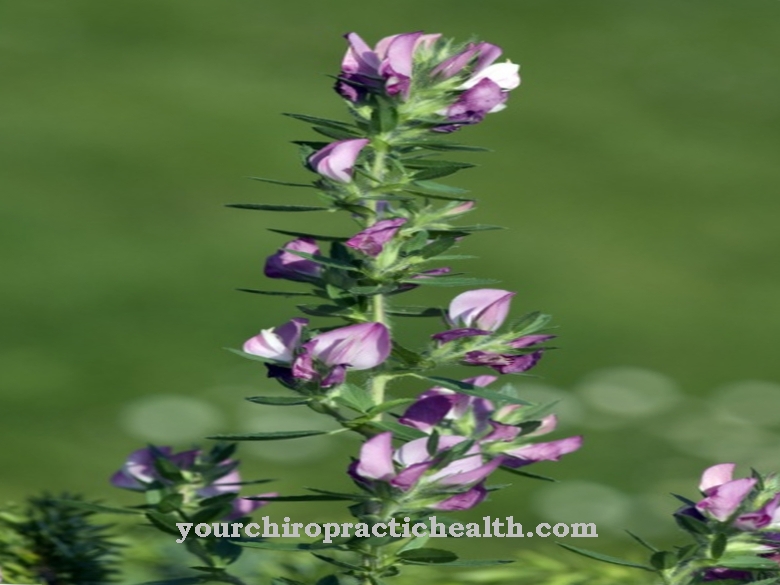The birch is a deciduous tree or shrub in the northern hemisphere that is widespread from Europe through Asia to America. The birch leaves as well as the bark and sap of the plant contain medicinally effective ingredients, which include, for example, the anti-inflammatory flavonoids and the diuretic and expectorant saponins. The medicinal properties have helped the individual components of birch species such as the sand birch to their traditional use in folk medicine and give them important importance in the naturopathic treatment of diseases such as dropsy, rheumatism or gout to this day.
Occurrence & cultivation of the birch

Birch treesare a genus of the birch family. All birch species are deciduous trees or shrubs. They grow with single, but sometimes several trunks and reach heights of up to 30 meters. Their wood is rather soft and takes on the colors black, light brown and white in the grain. The inflorescences of the birch are also called catkins. The fruit clusters are scaly leathery and stand upright or hang.
Birch trees grow mainly in the northern hemisphere. There they occur from Europe to North America to Japan. Their wood is often used as firewood, as the essential oils in the bark act as a catalyst during burning. In addition, many cosmetics, but also hair treatments, contain birch components.
Mode of action & use
The leaves of many types of birch contain many flavonoids, which are associated with a vascular and gastric protective effect. Flavonoids are proven to be antiallergic, antiviral and antioxidant. They activate certain cells of the immune system and are therefore anti-inflammatory. Flavonoids presumably even have cancer-preventing properties, as current laboratory studies have shown for the first time.
In addition to flavonoids, birch leaves also contain relatively high amounts of saponins, which have an anti-inflammatory, diuretic and expectorant effect. In addition to these cleansing functions, saponins bind cholesterol and also support the gastrointestinal tract. In addition to saponins and flavonoids, vitamin C, essential oils and tannins are important components of birch leaves. While the essential oils help against inflammation in the throat and stomach cramps, the tannins in the leaves inhibit bleeding and compress the tissue with a protective layer.
Like the flavonoids, they also counteract inflammatory processes. In the bark of the birch, in turn, there are phytosterols and terpenes, which are associated with properties that inhibit cholesterol, as well as promote blood circulation and excretion. The betulin contained in the strain has been proven to prevent cancer. Birch sap is usually drawn from the bark and is often used in the form of tinctures or oils.
The leaves and leaf buds of the birch are in turn usually processed into powder preparations or consumed whole. Tea can be made from all components of the plant and is therefore one of the most popular birch products. The leaf buds of the plant are collected in March. The harvest time for birch leaves is between May and June. Birch sap, on the other hand, is mainly tapped between March and May.
The trunk is tapped so that the juice can drain off. Because of its cleansing effect, the juice in particular is also suitable for treating open wounds, rashes or dandruff. For example, birch baths were used for this purpose in the past. Washing hair with birch water was then considered a preventive measure against phenomena such as hair loss.
Importance for health, prevention and treatment
Birch has been used in folk medicine for several centuries because of its medicinally effective ingredients. Above all, the medicinal use of the sand birch has a long tradition, as its ingredients have a particularly blood-purifying and diuretic effect and can thus be used against rheumatism, gout and dropsy. The kidneys also benefit from ingesting all the birch components, as the diuretic effect causes them a cleansing effect.
Birch trees also have a sweat-inducing effect and trigger a healing fever in acute illnesses. In this context, the buds of the plant are mainly used for respiratory diseases. One of the main uses of the popular birch tea made from boiled, fresh birch leaves is still today in the area of inflammatory processes. The hot drink is effective against cystitis as well as kidney infections and inflammatory processes in the gastrointestinal tract. It can also be used against coughs and digestive disorders. Birch tea in particular can not be prepared with too much effort by collecting birch leaves and leaving two tablespoons of them to steep in one liter of hot water for ten minutes.
The cold tea can also be used in the form of a compress against skin rashes or poorly healing wounds. The birch can thus be used against acute complaints. Above all, the flavonoids and betulin of the birch bark can also fulfill preventive functions because of their cancer-inhibiting properties. Both external and internal diseases can be treated with the plant. As a rule, users do not have to expect any risks or side effects.

























.jpg)


